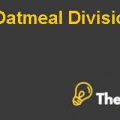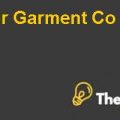
Cost of equity issuance and estimated cost GT will incur with its offering
The cost of equity issuance will depend on the risk associated with the security and the urgency of the funds require by the company. The cost of equity issuance of Goodyear Tire and Rubber Company will particularly be high because the security of Goodyear Tire and Rubber Company is comparatively more risky as compare to other securities in the market. Further, the company is also considering to raise finance instantly which will increase the bargaining power of the underwriters and will promote them to charge higher underwriting cost.
There are basically two types of cost associated with the issue of equity these consist of direct and indirect cost. Direct cost includes the fees paid to underwriters and expenses that are incurred due to legal and admin cost. Further, direct cost also includes the cost of advertising, printing and distribution of prospectus. Fees paid to underwriters depend on the extensiveness of the marketing efforts adopted by underwriters for the new equity issue.
In order to determine the indirect cost, filling date and offer date are very important. Filling date is the date when the company initially shows its intention to US Securities and Commission (SEC) to issue shares and the filling date is typically the first date when investors learn about the company’s intention to raise the capital for the first time. The offer date is the date when the issue is done in the market and the previously announced deal is priced and distributed to investors.
The cost of equity issuance has been bifurcated between the cost of nonshelf issue and shelf issue. Market adjustment return at file date represents -2.27% for all nonshelf issue and -1.06% for all shelf issue whereas, offer price underwriting for shelf and nonshelf issue are -1.96% and 2.34% respectively. It has been evaluated that the market reaction to new common stock is typically more negative than the response to preferred stock, convertible securities and debt offering. Further, direct cost paid to underwriters typically amounts to 4% to 5% of proceeds and expenses are 1% of proceeds.
Our analysis in Appendices 1 shows that the total funds received from the equity offer will amount to $720 million. It has been calculated as the company is considering to issue 22.5 million shares at an average value of $31 and $33 per share. Further, the direct cost associated with the proceeds will amount to $32.4 million, which has been calculated as an average of 4% to 5% of the gross proceeds. Additional expenses associated with the transaction amounts to $7.2 million, which has been calculated a 1% of the gross proceeds. Overall, the company will be suffering a cost of $39.6 million on the gross proceeds of $720 million, which remains net proceeds of $680.4 million.
Negative reaction of market for new equity issue and any initiatives to improve the reaction
Many analysts have argued that the new equity issue will depress the company’s share price because the new equity issue will increase the number of shares and the profit of the company will be distributed among various numbers of shareholdersm which will unltimately decrease earnings per share (EPS). The expected decrease in EPS will cause a decrease in the stock price.
Some of the analysts also believed that the company faced a price reduction as a result of an increase in the supply of the company’s equity. The price demand argument was believed on the fact that the demand schedule for shares of the company was downward sloping and the new shares could only be sold by offering a discount from market price.
Managers have an access to all the information of the company as compared to investors because they are involved in the operations of the company. Sales of new securities could be viewed as a window into the manager’s view of changes in a company’s prospects. New security issue provided sufficient information to the investors, which raised difficulty for them to figure out which implications reflected true affairs of the company; i.e. the new investment could be viewed as a need to raise further..................................
This is just a sample partial case solution. Please place the order on the website to order your own originally done case solution.











